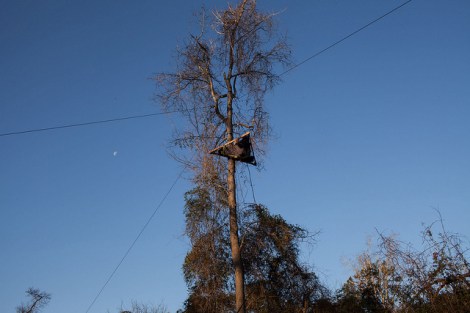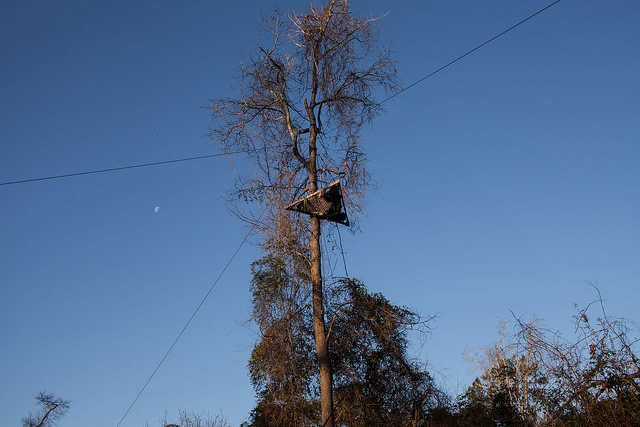Late Wednesday night, the Keystone XL blockaders launched a new tree-sit in Diboli, Texas, coinciding with kickoff of a direct-action training camp.

Last month, TransCanada, which is constructing the southern leg of Keystone XL, got around an 85-day treetop blockade by rerouting the pipeline. With this new tree-sit, located 150 miles south of the old one, “blockaders have found a location around which the pipe cannot easily be rerouted,” activists said in a statement.
A number of protesters on the ground have been arrested so far today, but the two activists in the trees are still untouched, and there have not (yet) been reports of police using force against anyone. In the past, police have put blockade activists in choke holds, dragged them on the ground, and pepper-sprayed them into compliance.
Blockaders say this latest action is being done in solidarity with Idle No More, an ongoing movement of Canada’s First Nations peoples who have, among other battles, been fighting against tar-sands pipelines on their native land. “Rising up to defend our homes against corporate exploitation is our best and only hope to preserve life on this planet,” Tar Sands Blockade spokesperson Ron Seifert said in a statement. “We must normalize and embrace direct, organized resistance to the death machine of industrial extraction and stand with those like Idle No More who take extraordinary risk to defend their families and livelihoods.”
A diversity of tactics and an ability to roll with the punches pepper spray are necessary to any movement’s success. The sustained energy around this series of blockades in Texas is notable, especially after the group’s December defeat. As opposition against the Keystone XL pipeline heats up on the ground in 2013, it seems safe to say that it’ll stay strong in the trees, too.




